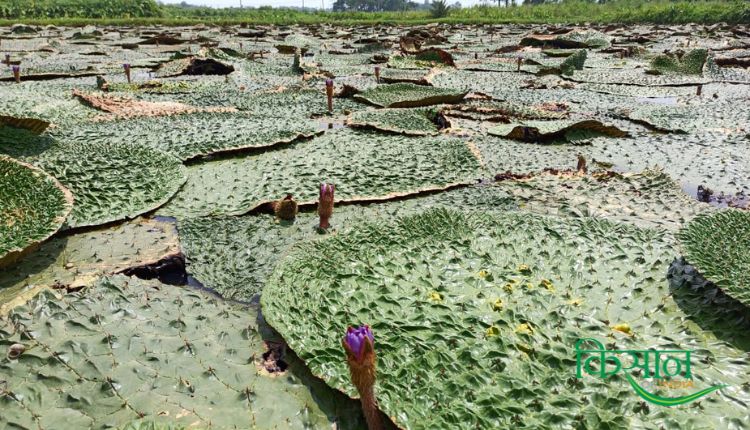
Makhana cultivation is a unique form of aquaculture that primarily involves the cultivation of Euryale ferox, commonly known as fox nuts or makhana. It is a traditional practice in certain regions of India, especially in Bihar, which accounts for more than 90% of the total production in the country. The cultivation process is labor-intensive and requires specific environmental conditions for success. Here’s an overview of the process:
1. Climatic and Geographic Conditions
- Water Bodies: Makhana is cultivated in stagnant, shallow water bodies like ponds, lakes, and wetlands. These water bodies must have a depth of around 4-6 feet.
- Climate: Makhana thrives in tropical and sub-tropical climates. It grows best in areas with high humidity and temperatures ranging between 20°C to 35°C.
- Regions: Apart from Bihar, makhana is also cultivated in parts of West Bengal, Assam, Manipur, and parts of Madhya Pradesh.
2. Stages of Makhana Cultivation
The cultivation process is broken down into several stages:
A. Sowing:
- Timing: The seeds are sown in shallow water bodies between January and February.
- Process: Makhana seeds (kernels) are broadcasted into the water by hand. These seeds sink to the bottom and germinate underwater. The plant’s leaves emerge on the water’s surface, while the roots remain embedded in the mud.
B. Growth:
- The makhana plant grows rapidly, and large, floating leaves appear on the surface. The plant flowers between April and June, after which the fruit develops.
- The fruits, known as gorgon nuts, are green and have spiny exteriors. Each fruit contains seeds, which are the raw makhana kernels.
C. Harvesting:
- Timing: Harvesting typically occurs between July and September.
- Manual Process: Farmers dive into the water to collect the fruits by hand. The fruits are collected in baskets and brought to the surface. This process is labor-intensive and requires skill, as the water bodies are often filled with mud and aquatic plants.
D. Processing:
After harvesting, the fruits are processed to extract the edible makhana kernels:
- Drying: The fruits are sun-dried for a few days to facilitate easier extraction of the seeds.
- Roasting: The seeds are roasted in large pans over a fire. This heating process is critical as it pops the hard seeds, allowing the inner kernel to separate from the outer shell.
- Popping: After roasting, the seeds are manually popped, revealing the soft, white makhana kernels that are edible.
- Grading and Packaging: The popped seeds are sorted based on size and quality, then packaged for sale in the market.
3. Varieties of Makhana
Makhana is usually classified into different grades based on the size and quality of the popped kernels. Larger, uniform-sized kernels are considered premium grade and fetch higher prices in the market.
4. Challenges in Makhana Cultivation
- Water Availability: Makhana cultivation requires large, stable water bodies. Depletion of water resources due to urbanization, industrialization, and climate change poses a threat.
- Labor Intensive: The entire process, from sowing to harvesting, requires extensive manual labor. Mechanization is limited, which increases production costs.
- Processing Technology: Traditional methods of popping and processing are time-consuming. Lack of modern processing techniques often results in wastage and lower-quality products.
- Middlemen: Farmers often depend on intermediaries for selling their produce, which leads to lower profits for the producers themselves.

